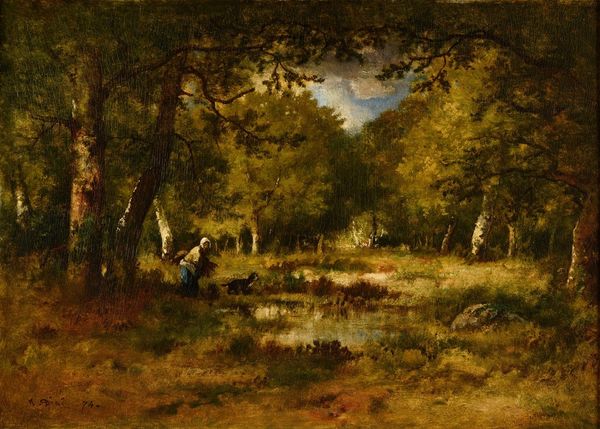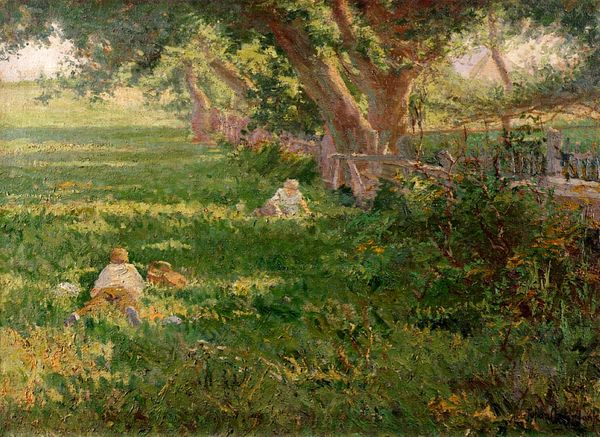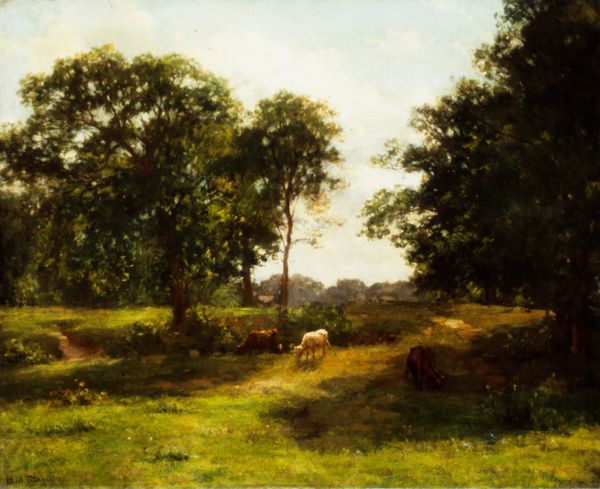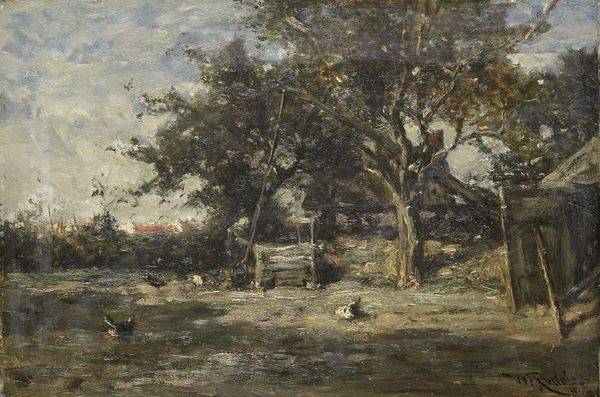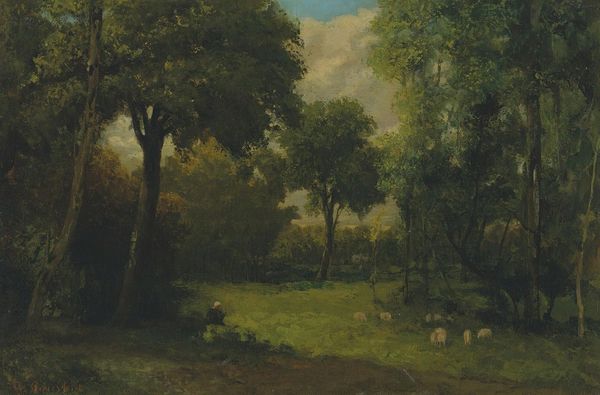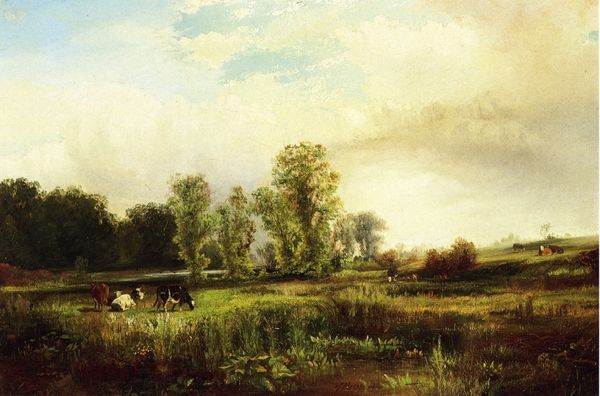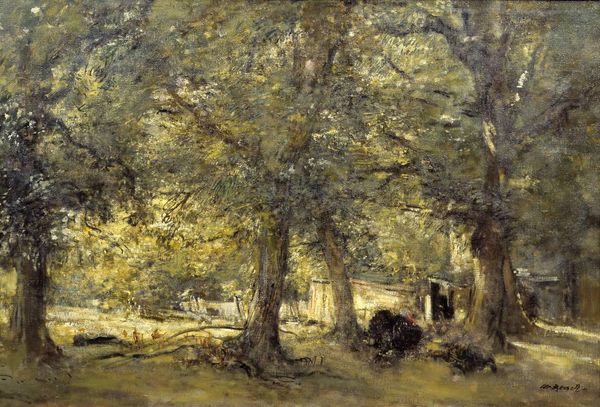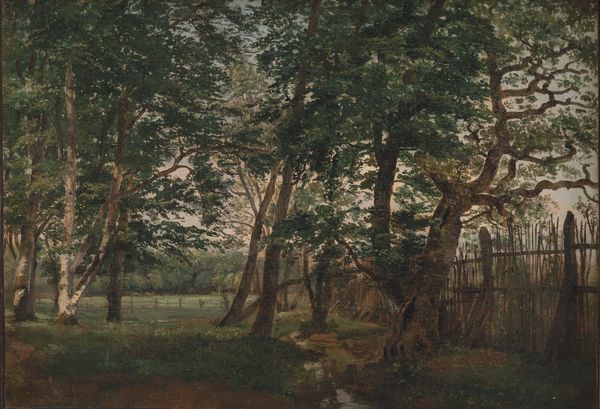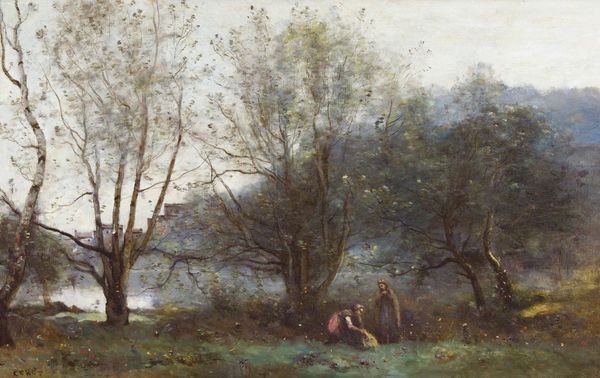
painting, plein-air
#
painting
#
impressionism
#
plein-air
#
landscape
#
genre-painting
#
realism
Copyright: Public Domain: Artvee
Curator: This is Winslow Homer's "Harvest Scene," painted around 1873. Homer, of course, moved more fully into the world of professional illustration, particularly through his engravings for publications like Harper's Weekly, but he returned time and again to painting. In this piece, he turns his gaze toward the depiction of rural life and labor. Editor: The palette is immediately striking, a wash of greens and browns. And there's an almost dreamlike quality. Notice the fleeting light, almost dappled. It's as if Homer’s capturing not just the scene but the feeling of a hazy summer afternoon. Curator: Exactly. It speaks to this fascination that emerged within both European and American art throughout the latter part of the nineteenth century with not just depictions of working class individuals, but also the artistic exploration of work's context and milieu. The "Harvest Scene," for instance, has the trappings of impressionism through its emphasis on en plein air methods, but aligns, more broadly, with a move towards what could be characterized as rural realism. Editor: Definitely. It invites consideration of the human connection to nature. It suggests that work could be portrayed in such a manner that conveys almost idealized harmony, too. One of the most fascinating choices here for me is the decision to tuck those agricultural figures deeper in the background behind the figures in the middle ground. They feel almost mythical—distant echoes. I think that emphasis hints toward our yearning for a simpler connection with the land. Curator: Interesting take, given Homer’s investment in documenting scenes, not simply from a privileged vantage point, but ones that reveal the harshness of everyday labor for many working class people. I find myself intrigued by that figure far in the back. They add a sort of human, temporal dimension that may run somewhat counter to the somewhat idealized quality that this style suggests more broadly. Editor: It is complex in those respects, indeed. Homer provides visual anchors that still remind viewers of a specific relationship with, in this case, agricultural labor and ritual. What lingers for me is that hazy, pastoral quality, an exploration of not just realism but an engagement with our human imagination. Curator: And perhaps there's something there for contemporary viewers, too, in that negotiation between ideal and lived experiences and realities.
Comments
No comments
Be the first to comment and join the conversation on the ultimate creative platform.
